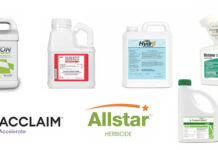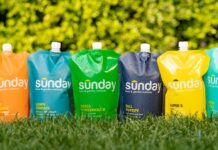What if you woke up tomorrow morning to find out a law had been passed prohibiting you from spraying synthetic pesticides on any lawn in your town? What if it banned the use of pesticides in your whole county? How about your entire state?
This is the situation many landscape and lawn care professionals in neighboring Canada have been dealing with for years. In fact, Ontario’s new ban on “cosmetic” pesticides went into effect in spring 2009, just in time for Earth Day on April 22, and many green professionals are scrambling to figure out exactly what this means for their business.
The Ministry of Environment approved banning of most of the 85 targeted substances (found in roughly 250 products). Stores were forced to remove some products from their shelves and inform customers that certain others are for restricted use only, such as killing poison ivy. Among the products are familiar brand names, such as C-I-L Weedout, Killex Lawn Weed Control and Wilson Garden Doctor Insecticide.
Is the U.S. next?
We need products that work and are cost-effective,” says Chris Lemcke, technical coordinator for Turf Operations, Inc., licensor of Weed Man’s name in America. Weed Man is a Canadian lawn care provider with 233 territories in the United States. “Also, there is confusion about what a ‘pesticide’ is and what a ‘green’ product is to the consumer, as well as lawmakers.
“Bylaws passed in Toronto four years ago said we were allowed to use products such as horticulture vinegar as a pesticide, because it comes from a natural source, even though it is 20 percent acidic and very toxic. You certainly don’t want it in your eyes. Yet, we have three-way herbicides, like Killex, which is less toxic, but is banned because it doesn’t come from an organic source.”
Already, more eastern states such as New York and Connecticut have enacted municipal banning applications on municipal-owned properties and stricter use of pesticides, including prenotifying, a process where neighbors of homes having a pesticide sprayed must be prenotified, which can be burdensome to lawn care professionals. States such as Minnesota and some cities in Wisconsin have ordered that no lawn care fertilizers can have phosphorous because it contributes to water algae at local lakes and streams, even though there have been studies and research that show you won’t get any phosphorous leeching into lakes and streams from fertilizing.
Despite these changes, many lawn care specialists don’t see a huge demand yet from American consumers for greener products. Lemcke estimates that 5 to 10 percent of Canadian Weed Man customers are asking for organic and looking for greener alternatives. A trend he notices and recommends to customers is IPM (integrated pest management).
Lemcke was one of the first lawn professionals to work with Sarritor, the first biological weed control registered in the world, and has been working on application methods to apply it faster. He started applying it three years ago in Canada, and this spring will be using it on up to 60,000 lawns.
Synthetic vs. organic
Jeff Kollenkark, a sub-franchisor of Weed Man International, has been exploring organic pesticides in the San Francisco Bay area in anticipation of similar bans possibly passing throughout municipalities in the United States.
“Consumers aren’t really demanding more green chemicals and products right now. In the Bay area, where there are more consumers concerned with going green in every aspect of their lives, we’ve thought about organic alternatives,” said Kollenkark. “The problem is there is only marginal control, around 50 percent, which is not a high enough standard for us. Plus, when the consumer finds out how much more expensive the organic products are and that they don’t work as well, they end up sticking with the synthetic alternatives.”
Kollenkark holds a Ph.D. in agronomy from Purdue University and has been researching Sarritor as a possibility in California if registered. The organic pesticide has been effective in Canada, but Kollenkark still isn’t convinced it will work as well in the hot, dry climate of California. He believes that unless the organics can get better results, the trend in the U.S. will instead move towards using less active ingredients going out per acre.
Fungicide and crabgrass control products such as Dimension and Barricade can release less than half the amount of the active ingredient than their former versions. For instance, the new chemistries can release .5-pound of active ingredient per acre, as opposed to the old chemistries that would release 1.5 to 2 pounds per acre.
“Sarritor is one of the more effective organic products that have some viability as weed control. If it becomes registered in the States and starts getting great results, I’m sure the Bay area consumers will clamor for it,” said Kollekark. “In the meantime, we are moving towards less active ingredient per acre and IPM.”
Sustainable care
During his career with the National Association of Landscape Professionals (NALP), Tom Delaney, the former director of government affairs for NALP, has been lobbying and monitoring federal, state and local legislation on environmental issues including pesticides, fertilizers and water issues. He says “sustainable care” is the big buzz term right now in the green movement in America.
Delaney maintains that the main issue now is whether lawn care is an aesthetic and cosmetic value only and a possible environmental detriment. There have been talks about limiting the number of inputs needed to care for the turf to lessen environmental impact, meaning water, fertilizer and pesticides and, in some instances, the possible air pollution from mowers is more common.
Biological products need to prove their effectiveness and drop in price before they can become a viable alternative. In the meantime, a strong offense is the best defense when it comes to an environmentally sound and green America. Integrated pest management and limiting the number of inputs make sound sense, says Delaney.
John Cundiff has been in the green industry since 1976 and is currently a sub-franchisor for Weed Man for the Midwest region of the U.S.











![[VIDEO] Dickies®: Discover Workwear That’s Anything But Uniform](https://turfmagazine.com/wp-content/uploads/2023/06/1647663814-4b1a2a7742790a9b1e97a3b963477850192e1d6a9dfba9b07214a77bae25d6e3-d-218x150.jpg)





























![[VIDEO] Dickies®: Discover Workwear That’s Anything But Uniform](https://turfmagazine.com/wp-content/uploads/2023/06/1647663814-4b1a2a7742790a9b1e97a3b963477850192e1d6a9dfba9b07214a77bae25d6e3-d-324x160.jpg)